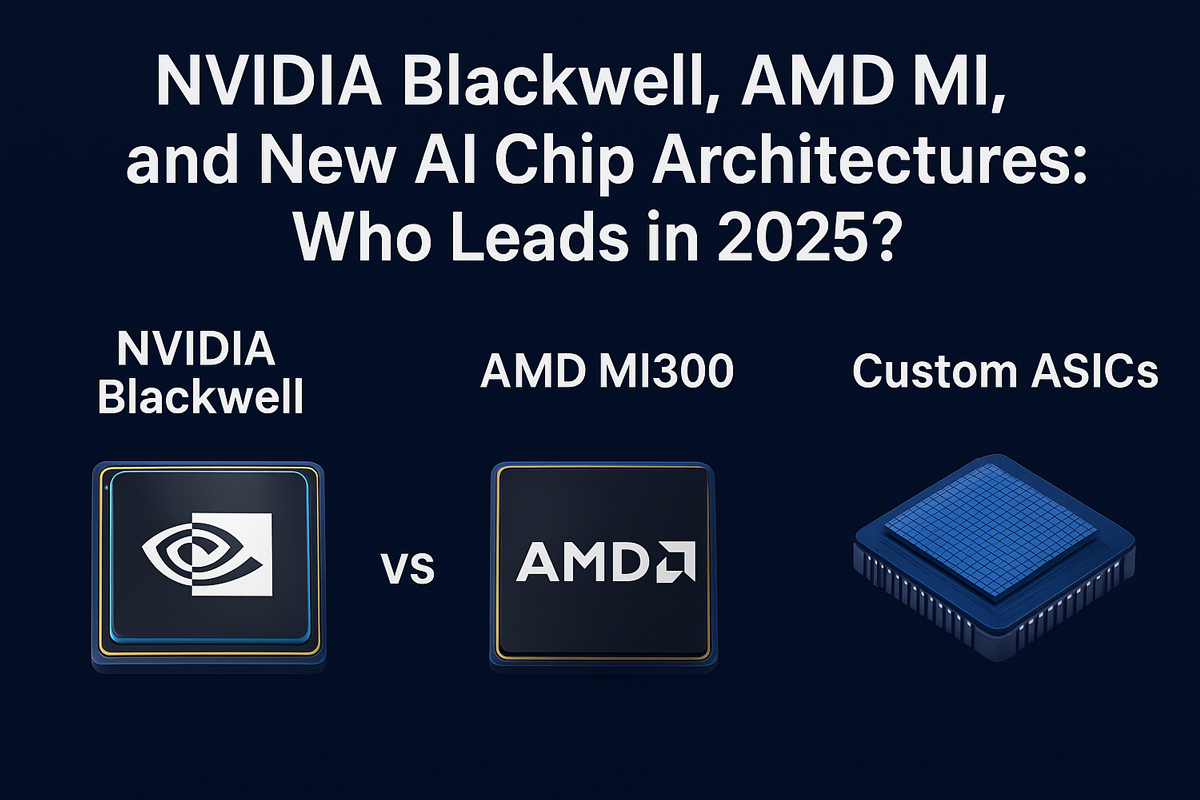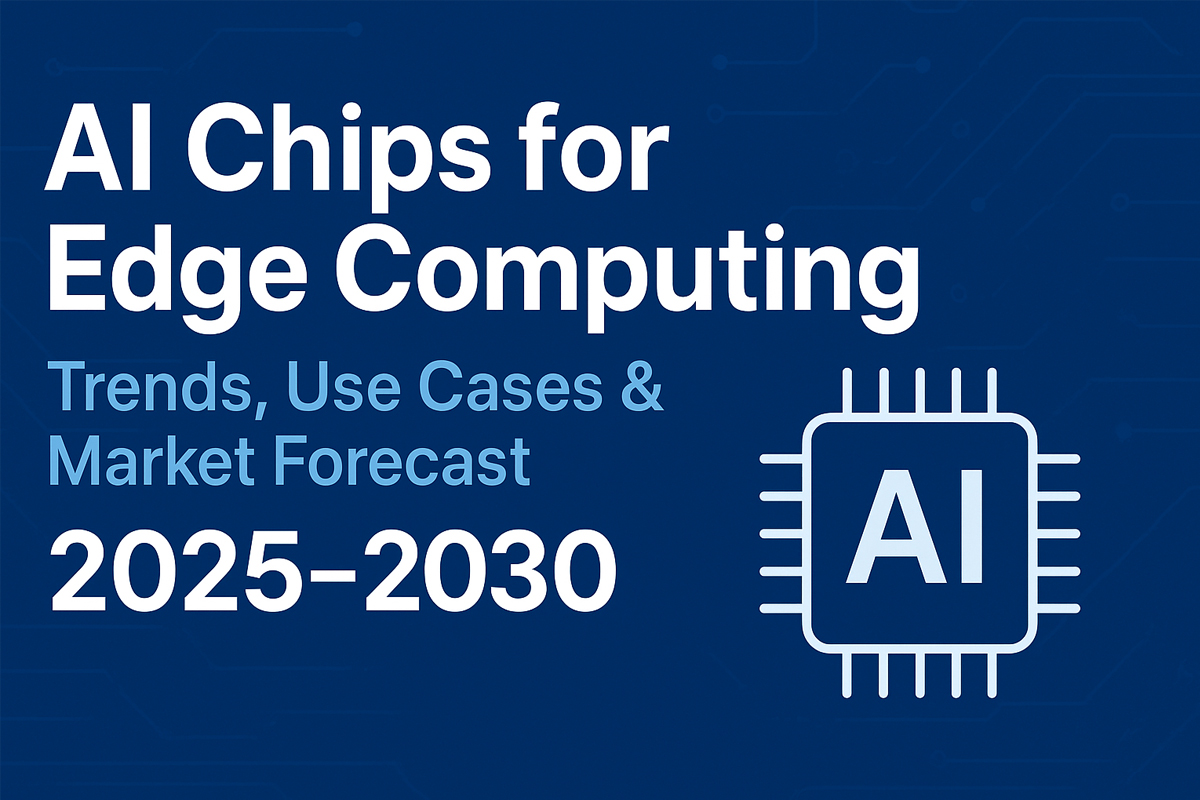In the rapidly evolving world of artificial intelligence, AI chips for edge computing are redefining how devices process data, make decisions, and communicate in real time. As industries shift toward decentralized intelligence, edge AI hardware has become a cornerstone of next-generation computing. This article explores the latest edge AI hardware trends 2025, real-world use cases of AI chips at edge, and the edge AI chips market forecast for the coming decade.
1. The Rise of AI Chips in Edge Computing
Traditional AI processing relied heavily on the cloud, requiring large amounts of bandwidth and latency-sensitive data transfer. However, as applications like autonomous drones, smart cameras, and industrial IoT systems demand instant decision-making, computation is increasingly moving closer to the source — the edge.
This shift has given rise to AI chips designed specifically for edge computing, built to handle real-time data analysis while consuming less power and bandwidth. These chips combine the power of machine learning accelerators with efficient architectures that enable low-latency responses, even in environments with limited connectivity.
2. Why Edge AI Matters
Edge AI allows devices to process information locally — enhancing speed, privacy, and reliability. With advancements in AI chips for edge computing, organizations can deploy intelligent systems that act autonomously without constant dependence on cloud servers.
Key Benefits:
- Reduced Latency: On-device AI inference minimizes delay for mission-critical applications like robotics and autonomous vehicles.
- Enhanced Data Privacy: Sensitive data never leaves the device, improving compliance with privacy regulations.
- Lower Bandwidth Costs: Less data transmission means lower operational costs, especially in remote or industrial setups.
3. Use Cases of AI Chips at Edge
The use cases of AI chips at edge span across sectors where speed, efficiency, and reliability are essential. Some leading examples include:
a. Smart Surveillance and Security
AI-powered cameras equipped with edge chips can detect anomalies, track motion, and recognize faces in real time — even without cloud connectivity.
b. Autonomous Vehicles and Drones
Edge AI chips enable autonomous decision-making for navigation, obstacle avoidance, and environmental awareness, crucial for drones and self-driving systems.
c. Industrial IoT (IIoT)
Factories and plants are adopting edge AI hardware to monitor machinery, predict failures, and optimize production in real time.
d. Healthcare Devices
Wearable and diagnostic tools use AI chips to monitor patient vitals locally, ensuring faster response times and better patient outcomes.
e. Smart Cities
Wearable and diagnostic tools use AI chips to monitor patient vitals locally, ensuring faster response times and better patient outcomes.
4. Edge AI Hardware Trends 2025
As we move into 2025, the edge AI hardware trends reflect a focus on energy efficiency, scalability, and hybrid architectures. Key developments include:
- Low-Power AI Accelerators: Designed for longer battery life and continuous operation in portable and embedded devices.
- Neuromorphic Computing: Chips modeled after the human brain to achieve ultra-low power consumption and parallel processing.
- Heterogeneous Integration: Combining CPUs, GPUs, and NPUs (Neural Processing Units) into unified edge platforms for versatile AI tasks.
- 5G and Edge Synergy: Integration with 5G networks enhances real-time analytics and cloud-edge collaboration.
- Sustainability: Manufacturers are focusing on recyclable materials and energy-efficient designs to reduce carbon footprint.
5. Edge AI Chips Market Forecast (2025–2030)
According to the latest edge AI chips market forecast, the global market is projected to grow at a CAGR of over 20% from 2025 to 2030, reaching multi-billion-dollar valuations.
Key factors driving this growth include:
- Increased demand for real-time analytics in smart devices and autonomous systems.
- Expansion of 5G networks and IoT ecosystems.
- Government initiatives promoting AI infrastructure and semiconductor manufacturing.
- Rising investments in AI-powered edge data centers and robotics.
Regionally,Asia-Pacific is expected to lead the market due to the rapid adoption of smart manufacturing and government support for semiconductor innovation.
6. The Road Ahead
As industries continue to evolve, AI chips for edge computing will play a defining role in enabling intelligent automation, sustainability, and faster decision-making. The fusion of efficient hardware design, real-time AI processing, and scalable architectures will power the next wave of innovation from 2025 to 2030.
At AI Chips Inc., we are committed to developing high-performance, low-power AI chip solutions that empower the edge — bringing intelligence closer to where it matters most. Contact us to learn how our products can accelerate your edge AI transformation.





